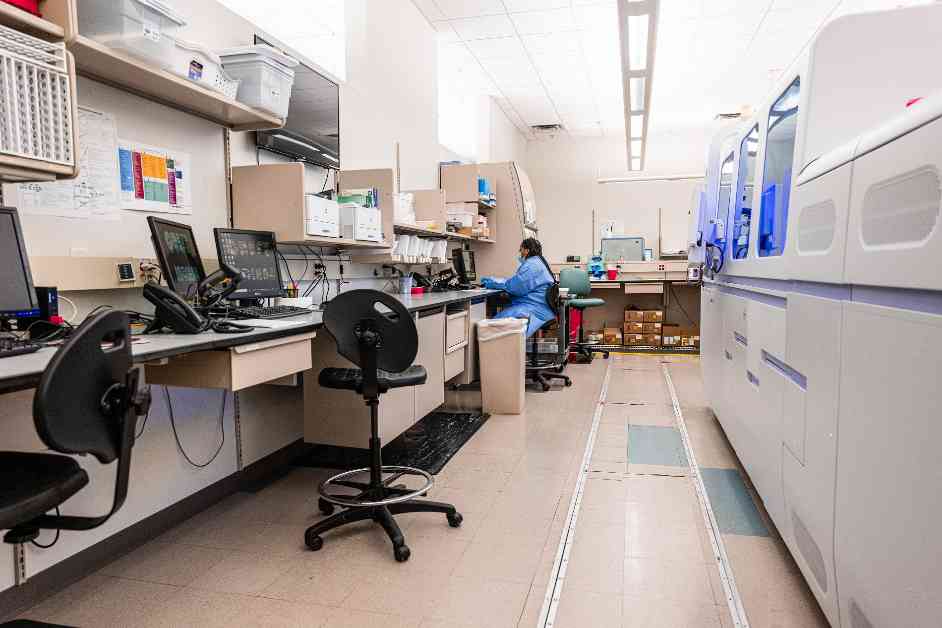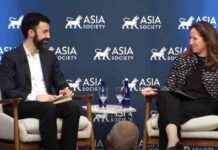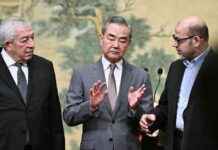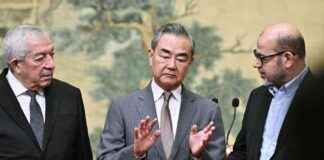America’s Need for Chinese Scientists: An Analysis of Global Times’ Translation
In today’s rapidly evolving world, the importance of international collaboration in the field of science and technology cannot be overstated. As countries strive to maintain their global leadership and competitiveness, the exchange of knowledge and expertise between nations has become essential. However, recent developments have highlighted the challenges and complexities involved in fostering such collaborations, particularly when it comes to the relationship between the United States and China.
On May 25, 2023, The New York Times published an op-ed titled “Like It or Not, America Needs Chinese Scientists,” written by Dan Murphy, an expert in academic links with China. The article delved into the issue of American higher education’s engagement with China in the STEM fields and the importance of attracting top talent from across the globe. However, what followed was a surprising turn of events, as the Chinese State-run Global Times newspaper translated and published the article without Murphy’s knowledge or permission.
The Global Times’ translation of Murphy’s op-ed raised several concerns, as it omitted and altered key parts of the original article. While some changes were minor, such as shortening the piece or removing less relevant passages, the majority of alterations served to eliminate or soften criticism of China, thereby altering the overall tone of the essay. Additionally, all external links included in Murphy’s original article were removed, presumably to prevent readers from accessing content that may be restricted in China.
One of the most significant points raised by Murphy in his op-ed was the damaging impact of the Department of Justice’s China Initiative on Chinese scientists and researchers in the United States. The initiative, aimed at countering economic espionage and national security threats from China, resulted in several cases where individuals of Chinese descent were unjustly targeted and faced legal repercussions. Despite the program being disbanded, its legacy of fear and suspicion continues to affect the Chinese scientific community in the US.
Furthermore, Murphy highlighted the vital role that international collaboration plays in advancing scientific research, emphasizing the need to attract top talent from around the world to maintain America’s competitive edge. He underscored the importance of fostering an environment that welcomes diversity and encourages collaboration, rather than succumbing to fear and mistrust. By promoting openness and transparency in academic partnerships, the US can continue to lead in scientific innovation and discovery.
As China emerges as a global scientific powerhouse, it is crucial for the US to acknowledge and engage with this reality constructively. China’s significant investments in research and development, coupled with the increasing quality of its scientific output, pose both opportunities and challenges for international collaboration. While concerns about academic fraud and intellectual property theft are valid, it is essential to differentiate between legitimate concerns and unfounded fear-mongering.
The deteriorating state of academic cooperation between the US and China is not solely the result of Chinese actions but also reflects broader geopolitical tensions and policy decisions. As China tightens its control over research activities and imposes restrictions on academic freedom, the flow of ideas and knowledge between the two countries is increasingly constrained. This trend threatens to stifle innovation and hinder scientific progress on a global scale.
In light of these challenges, it is imperative for policymakers, academics, and industry leaders to adopt a nuanced and strategic approach to engaging with China. Rather than resorting to blanket bans or punitive measures, efforts should be focused on promoting dialogue, building trust, and fostering mutually beneficial partnerships. By leveraging each other’s strengths and expertise, the US and China can work together to address common challenges and drive innovation in critical areas such as healthcare, energy, and the environment.
Challenges and Opportunities in US-China Scientific Collaboration
The relationship between the US and China in the field of science and technology is complex and multifaceted, characterized by both cooperation and competition. While both countries have much to gain from collaborating on research projects and sharing expertise, there are also significant barriers that impede effective cooperation. Issues such as intellectual property rights, data security, and academic freedom pose challenges to building trust and fostering meaningful partnerships.
At the same time, the rapid pace of technological advancement and the growing interconnectedness of global research networks present new opportunities for collaboration between the US and China. By leveraging each other’s strengths and resources, both countries can accelerate the pace of scientific discovery and drive innovation in key areas. From joint research projects to student exchange programs, there are numerous avenues through which US-China scientific collaboration can flourish.
However, realizing the full potential of such collaboration requires a commitment to transparency, accountability, and mutual respect. Both countries must be willing to address thorny issues such as cybersecurity, data sharing, and ethical standards to ensure that scientific partnerships are built on a solid foundation of trust and integrity. By fostering an environment of open dialogue and cooperation, the US and China can pave the way for groundbreaking discoveries and advancements in science and technology.
Building Bridges, Not Walls: The Path Forward for US-China Scientific Cooperation
As we look to the future, it is clear that the US and China must find common ground and work together to address the pressing challenges facing the global scientific community. By fostering a spirit of collaboration and mutual understanding, both countries can unlock the full potential of their scientific talents and resources. From joint research initiatives to academic exchanges, there are countless opportunities for the US and China to strengthen their scientific ties and drive innovation on a global scale.
At the same time, it is essential for both countries to remain vigilant and guard against potential threats to academic freedom, intellectual property rights, and data security. By establishing clear guidelines and protocols for collaboration, the US and China can mitigate risks and ensure that scientific partnerships are conducted in a transparent and ethical manner. Additionally, continued investment in science education and research infrastructure will be crucial to fostering a culture of innovation and excellence in both countries.
In conclusion, the relationship between the US and China in the field of science and technology is at a critical juncture. By embracing the principles of openness, collaboration, and mutual respect, both countries can harness the power of science to address global challenges and drive positive change. As we navigate the complexities of international scientific cooperation, let us remember that our shared pursuit of knowledge and discovery knows no borders. Together, we can build a brighter future for all.

















